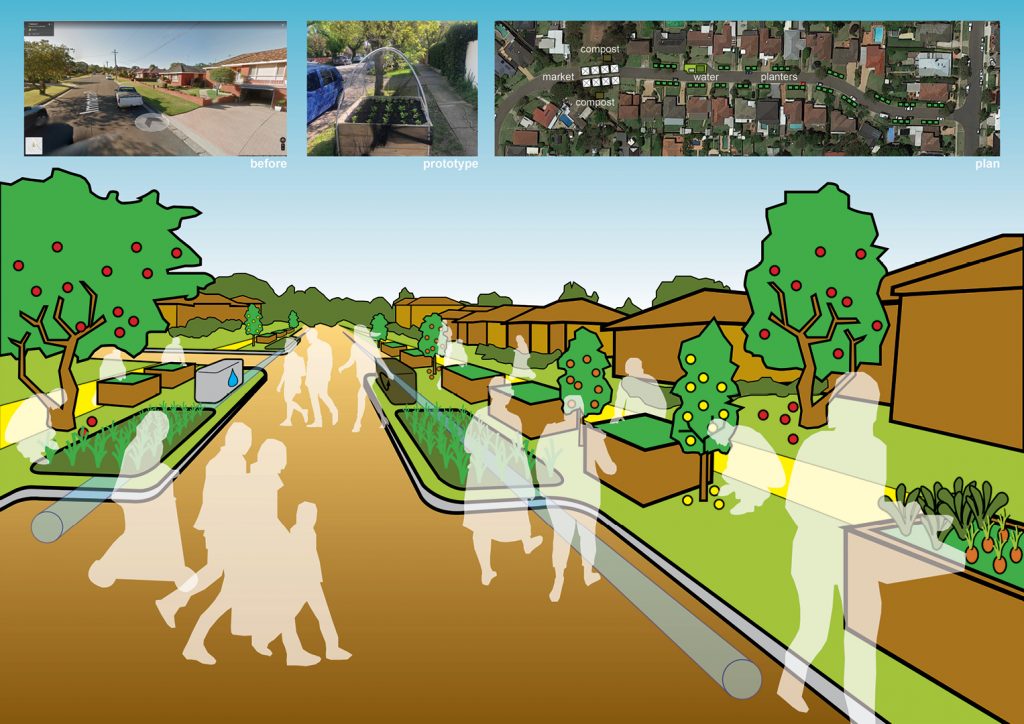Meet & Eat Street
Simon McPherson
Transforming suburban streets into productive, sociable, efficient and connected places.
This year we installed a raised garden on our nature strip (to Council guidelines), growing cucumbers, lettuce, carrots, beetroot and radishes, with at least partial success. Whenever my family tends to it, we enjoy questions, support and interaction with passersby. This launched an idea…
Urban agriculture supports health, social connection, local economies, and sustainability, and reduces waste, energy and water consumption. Nature strips are an underutilised, valuable resource distributed throughout our cities, while our rural ‘food bowls’ are increasingly pressured by urban expansion.
For a Meet & Eat Street, each home gets a planter box for $50, gaining $100 of produce in Year 1. A gardener is employed to ensure success, scaling back over time as residents build skills and confidence. Scale and efficiency by Year 6 support a net profitable operation.
Centralised composting allows residents to deposit food waste, and enhances garden productivity. Stormwater drainage is reconfigured, through WSUD filtration into storage tanks to irrigate the gardens beds and fruit trees.
More boxes are established over time. Increased yields support community needs and can supply nearby shops and cafes, as an income stream to support more production. An outline business model excluding hard infrastructure is below.
The Meet & Eat Street can transform suburban streets and urban life: the public street as an urban farm, social connector and green oasis.
Yr 1 Costs: $18,700 | Production: $2,000
Yrs 2-5 Costs: $17,300 | Production: $12,500
Yrs 6-10+ Costs: $17,500 | Production: $30,000
